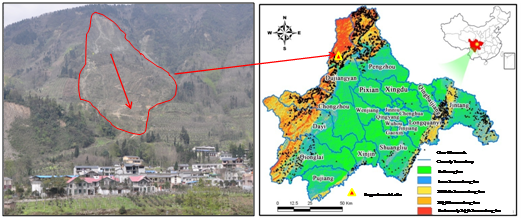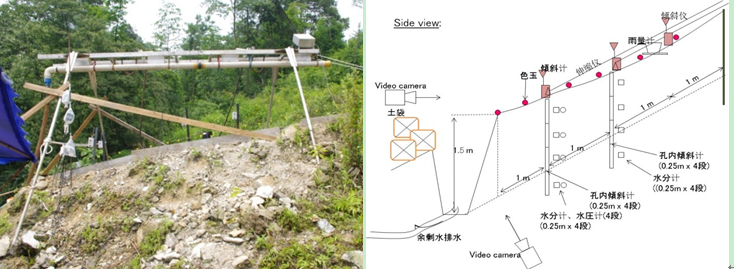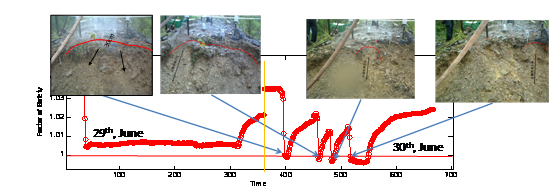Clarifying the hydro-mechanical characteristics of the mechanism associated with mass remobilization is a major step towards landslide early warning, but this clarification is usually hampered by a lack of in situ evidence.
Following a detailed in situ experimental test and hydro-mechanical analysis, a team of scientists from IMHE, CAS, has published their results in the journal Engineering Geologyrecently.(DIO:1-s2.0-S0013795216305646-main).
The researchers documented the shallow rainfall-triggered slope failures under partially saturated conditions and the hydro-mechanical behavior of post-earthquake landslide deposit (Figure 1), by combining instrumental evidence from field experiments on a natural co-seismic landslide (Figure 2)and hydro-mechanical slope stability analysis in an earthquake-affected region(Figure 3). The results revealed the transient processes and unsaturated conditions associated with mass movements in response to rainfall. The SWRC parameters of the unsaturated wide grading gravelly deposit were determined during the wetting and drying phases, and preferential flow paths were found to dominate the hydrological processes during rainfall infiltration in the landslide deposit. The results also demonstrated the importance of certain hydrological parameters, including soil matric suction and moisture content, in landslide early warning (Table 1). This study reveals a partially saturated hydro-mechanical behavior to predict the initiation of rainfall-induced landslides during post-earthquake disaster relief.

Figure 1. Location of the in situ experimental tests. The tests were conducted on the natural Taziping landslide, Dujiangyan County, Chengdu City

Figure 2. Photo (a) of the site and the instrumentsin the field (b) on Taziping landslide, Dujiangyan County, Sichuan Province


Figure 3. Modelled suction stress and factors of safety for different layers in the slope during the field test.
Table 1. Hydro-mechanical early warning criteria for rainfall induced landslide in the Wenchuan earthquake region

